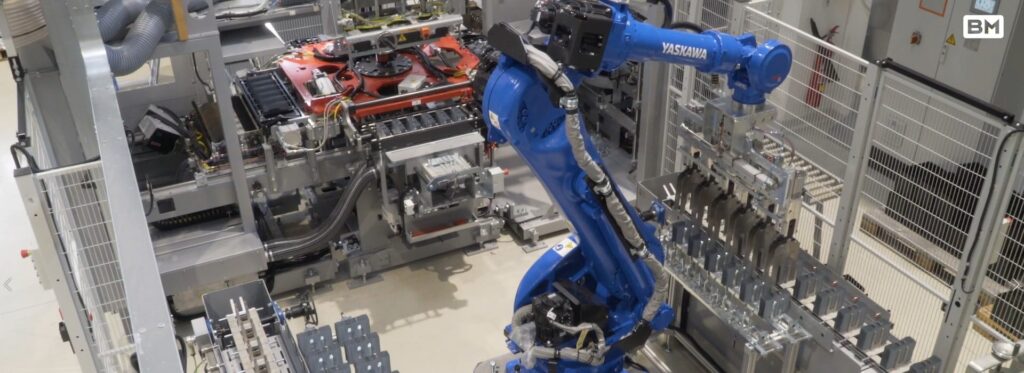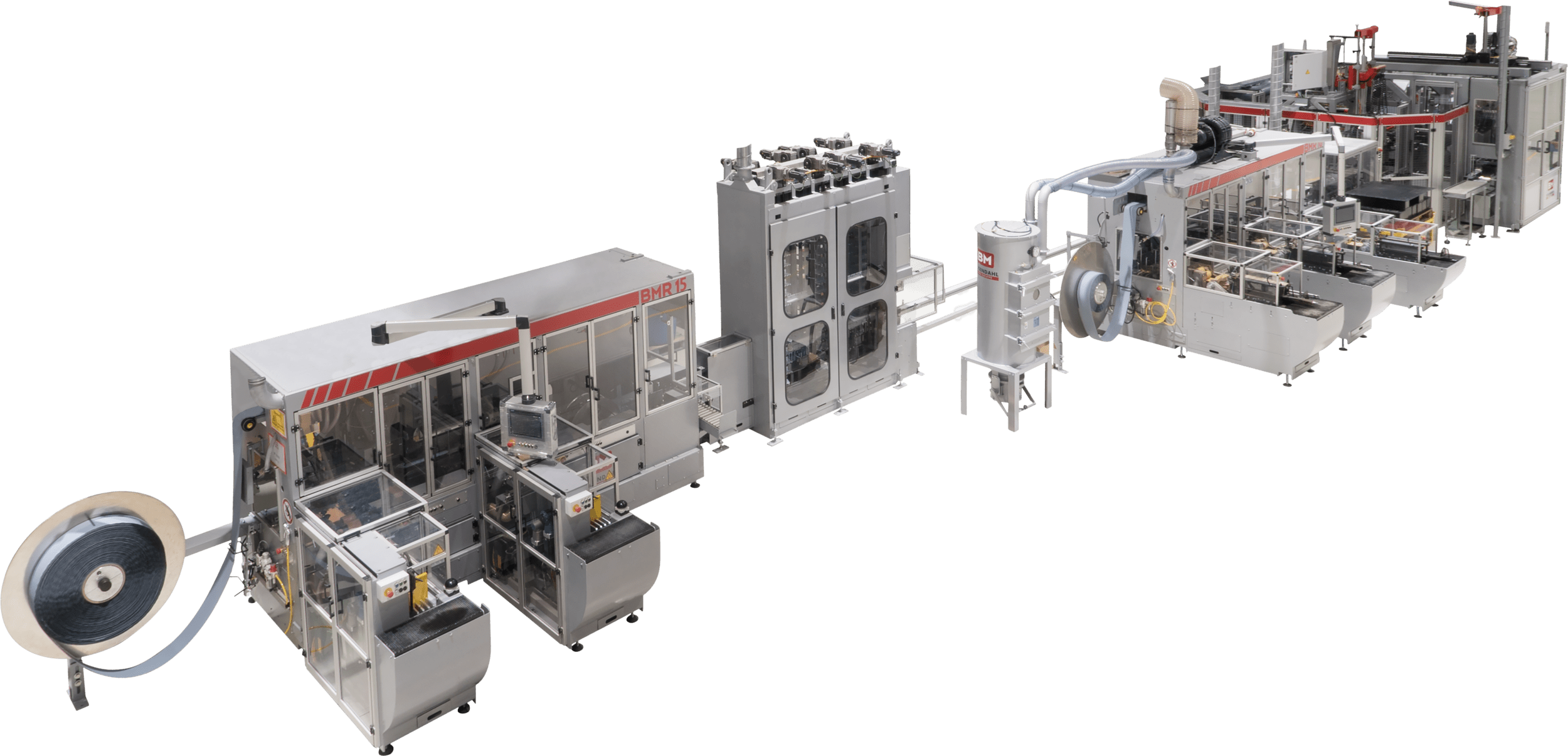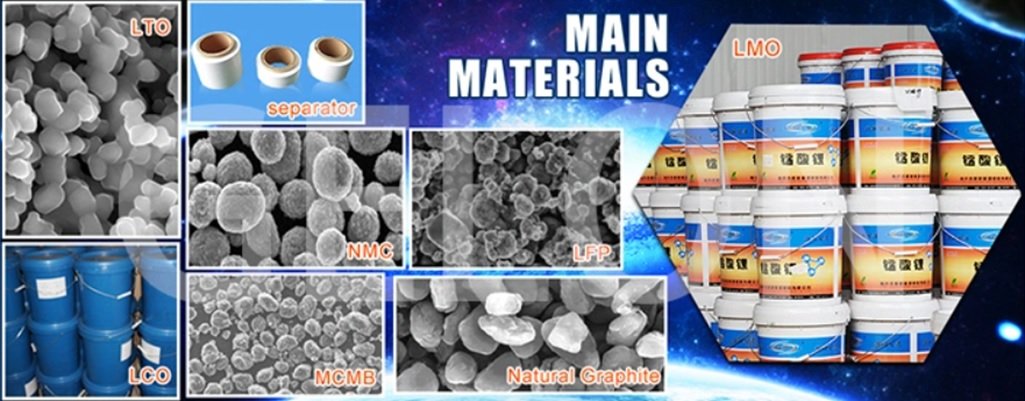Battery Production Machinery & Materials

Our expertise lies in the realm of manufacturing machinery tailored for battery production, as well as the provision of essential raw materials required for the diverse spectrum of battery types. Beyond this, we extend our services to assist our valued clients in the establishment of comprehensive quality control and research laboratories. These laboratories serve as essential assets in enhancing the quality of our clients’ batteries and concurrently, in optimizing production costs.
- Battery Production Machinery: Our core focus is on the design, development, and supply of cutting-edge machinery specifically designed for battery manufacturing. These machines are meticulously engineered to cater to the unique requirements of various battery types, including but not limited to lithium-ion, nickel-cadmium, lead-acid, and more. By offering state-of-the-art production equipment, we empower our clients to streamline their manufacturing processes, resulting in improved efficiency and productivity.
- Raw Materials: We recognize the significance of high-quality raw materials in battery production. Hence, we provide a comprehensive range of essential battery raw materials. Whether it’s lithium, cobalt, nickel, graphite, or any other critical component, our sourcing and supply network ensures a steady and reliable source of materials, essential for consistent battery production. We are committed to sourcing materials that meet stringent quality standards and environmental considerations.
- Quality Control Labs: Maintaining the highest standards of quality in battery production is paramount. To assist our clients in achieving this, we offer guidance and support in establishing dedicated quality control laboratories. These labs are equipped with state-of-the-art testing equipment and staffed by experts in the field. They serve as invaluable tools for inspecting and verifying the quality of batteries at various production stages, ultimately ensuring that only top-tier products reach the market.
- Research and Development Support: Continuous innovation is a driving force in the battery industry. To facilitate our clients’ endeavors in staying at the forefront of technology and performance, we help them set up research and development laboratories. These labs provide a controlled environment for experimentation, testing new materials, and refining battery designs. Our aim is to empower our clients to develop next-generation batteries that are more efficient, durable, and eco-friendly.
- Cost Optimization: In addition to enhancing quality, we recognize the importance of cost control in today’s competitive battery market. By implementing advanced manufacturing processes and materials, we work alongside our clients to identify opportunities for cost optimization without compromising on product quality. This holistic approach ensures that our clients can produce batteries that are not only superior but also economically sustainable.
In summary, our comprehensive suite of services encompasses machinery, raw materials, quality control, and research and development support, all aimed at assisting our clients in achieving excellence in battery production. We understand the evolving dynamics of the battery industry and remain committed to providing tailored solutions that meet the unique needs of our clients while contributing to the advancement of sustainable energy solutions.
Batteries are electrochemical devices that store and provide electrical energy through chemical reactions. We deal in several types of batteries, each with its own unique characteristics, applications, and chemical compositions. Here are our some common battery types:
- Alkaline Batteries: These are the most common household batteries. They use zinc and manganese dioxide as their electrodes and an alkaline electrolyte (usually potassium hydroxide). Alkaline batteries are known for their reliability and long shelf life.
- Lithium-ion (Li-ion) Batteries: Li-ion batteries are widely used in portable electronic devices like smartphones, laptops, and digital cameras. They have high energy density, are lightweight, and can be recharged. Li-ion batteries use lithium as one of their electrode materials.
- Lead-Acid Batteries: Commonly found in automobiles and uninterruptible power supplies (UPS), lead-acid batteries use lead dioxide as the positive electrode and sponge lead for the negative electrode. They are known for their durability but are heavy and have a relatively low energy density.
- Nickel-Cadmium (NiCd) Batteries: NiCd batteries use nickel oxide hydroxide as the positive electrode and cadmium as the negative electrode. They are rechargeable and have a long cycle life but are less common today due to concerns about cadmium’s environmental impact.
- Nickel-Metal Hydride (NiMH) Batteries: NiMH batteries are rechargeable and are often used in devices like digital cameras and cordless phones. They have a higher energy density than NiCd batteries and are more environmentally friendly.
- Lithium Polymer (LiPo) Batteries: LiPo batteries are a variation of lithium-ion batteries. They are used in drones, radio-controlled vehicles, and some portable electronics. LiPo batteries are known for their high discharge rates and flexibility in terms of shape and size.
- Zinc-carbon batteries: These are often used in low-power devices like remote controls and flashlights. They have a relatively short lifespan and are non-rechargeable.
- Silver-Oxide Batteries: These small button cells are commonly used in watches, calculators, and hearing aids due to their stable voltage output and long life.
- Zinc-Air Batteries: Often used in hearing aids and some medical devices, zinc-air batteries rely on the reaction between zinc and oxygen from the air to generate power. They have a high energy density.
- Solid-State Batteries: These are a newer technology that uses solid electrolytes instead of liquid or gel electrolytes found in most other batteries. Solid-state batteries are still in development but promise higher energy density, longer lifespan, and enhanced safety.
Types of Battery Production Line & Raw Materials
 Each battery type has its own advantages and disadvantages, making them suitable for specific applications based on customer’s requirements such as energy requirements, size constraints, and environmental considerations.
Each battery type has its own advantages and disadvantages, making them suitable for specific applications based on customer’s requirements such as energy requirements, size constraints, and environmental considerations.
Battery Production Machinery

The production of lead batteries involves several manufacturing steps, including the assembly of battery components and the use of various machinery and equipment. Here is an overview of the typical machinery and the process involved in lead-acid battery production:
- Lead Grid Production:
- Grid Casting Machines: These machines are used to cast lead grids, which serve as the support structure for the active material in the battery plates. Molten lead is poured into molds to create the grids.
- Paste Mixing:
- Mixer Machines: Battery paste is created by mixing lead oxide with sulfuric acid and water. Mixer machines thoroughly blend these components to create the paste used for plate coating.
- Plate Making:
- Plate-Coating Machines: Battery paste is applied to lead grids to form positive and negative plates. Plate-coating machines coat the grids evenly with the paste.
- Drying Ovens: After coating, the plates are passed through drying ovens to remove excess moisture from the paste and set it.
- Plate Pasting Machines: These machines stack positive and negative plates alternately to create plate sets.
- Plate Curing:
- Plate Curing Chambers: Plate sets are placed in curing chambers, where they undergo a chemical curing process to improve plate performance.
- Assembly:
- Assembly Line Machines: Automated assembly lines are used to assemble the battery components, including the plates, separators, and other parts.
- Pasting and Grouping Machines: Plates are grouped together with separators and assembled into battery cells.
- Terminal Welding Machines: Battery terminals are welded to the cell to provide electrical connections.
- Separator Cutting Machines: Machines cut separators to the required size for each cell.
- Filling and Formation:
- Electrolyte Filling Machines: Electrolyte (sulfuric acid and water) is filled into the cells to activate the plates.
- Formation Tanks: Cells are connected in series and undergo formation, a controlled charging and discharging process that conditions the battery for optimal performance.
- Sealing and Testing:
- Sealing Machines: Battery cells are sealed to prevent leaks.
- Battery Testing Equipment: Various tests, including voltage checks, capacity testing, and leak tests, are performed to ensure the battery meets quality standards.
- Formation and Finishing:
- Formation and Charge-Discharge Equipment: The batteries are subjected to a final charge-discharge cycle to stabilize their performance.
- Terminal Insulation and Labeling Machines: Terminals are insulated, and labels are applied to identify the battery specifications.
- Final Inspection: A final quality control check is conducted to ensure that each battery meets the required specifications.
- Packaging:
- Packaging Machines: Batteries are packaged in cartons or other suitable containers for distribution.
- Storage and Distribution:
- Warehousing and Distribution Systems: Batteries are stored and prepared for shipment to customers.
Throughout our lead battery production process, quality control measures are in place to ensure that each battery meets the required performance and safety standards. Safety protocols are also implemented to manage the handling of lead and sulfuric acid, which can be hazardous materials.
Testing & Research Lab

A battery testing and research laboratory is a specialized facility dedicated to the evaluation, analysis, and development of batteries. These labs play a critical role in advancing battery technology, ensuring the safety and reliability of batteries, and optimizing their performance. Here are some key aspects of a battery testing and research lab:
1. Battery Performance Testing:
- Battery Capacity Testing: Laboratories conduct capacity tests to measure the amount of energy a battery can store and deliver over time.
- Charge and Discharge Testing: This involves cycling batteries through charge and discharge processes to assess their cycle life, efficiency, and performance under different conditions.
- Voltage and Current Testing: Monitoring voltage and current profiles helps understand how batteries behave during operation.
- Temperature Testing: Evaluating how batteries perform at various temperatures is crucial for determining their suitability for specific applications.
2. Safety Testing:
- Abuse Testing: Researchers subject batteries to extreme conditions such as overcharging, short-circuiting, and overheating to assess their safety features and failure modes.
- Thermal Runaway Testing: This involves studying the behavior of batteries when they undergo thermal runaway, a critical safety concern in battery technology.
3. Materials Characterization:
- Researchers analyze the chemical and physical properties of battery materials, including electrodes, electrolytes, and separators, to improve battery performance and lifespan.
- Microscopy and spectroscopy techniques are often employed to study materials at a microscopic level.
4. Environmental Testing:
- Environmental chambers are used to simulate different environmental conditions, such as humidity, temperature, and pressure, to assess how batteries perform and degrade in real-world scenarios.
5. Prototype Development:
- Labs may have facilities for building and testing prototype batteries to evaluate new designs, materials, and manufacturing processes.
6. Data Analysis and Modeling:
- Researchers use data analysis and computer modeling to predict battery behavior, optimize designs, and identify areas for improvement.
7. Safety and Standards Compliance:
- Battery labs ensure that batteries meet safety standards and regulations, such as UN/DOT transportation regulations and specific industry standards.
8. Advanced Research:
- Fundamental research is conducted to discover new materials, chemistries, and technologies that can revolutionize battery performance and energy storage.
9. Collaboration:
- Battery labs often collaborate with industry partners, universities, and government agencies to accelerate research and development efforts.
10. Energy Storage Solutions:
- Battery labs may explore applications beyond consumer electronics, such as grid-scale energy storage, electric vehicles, and renewable energy integration.
These labs play a crucial role in advancing battery technology, which is essential for powering everything from smartphones and electric vehicles to renewable energy systems and portable medical devices. Their work contributes to improving energy storage capacity, efficiency, safety, and environmental sustainability.
Battery Raw Materials

Battery raw materials are the fundamental components required to manufacture batteries, which are essential for storing and providing electrical energy in various applications, including electric vehicles (EVs), portable electronic devices, renewable energy systems, and more. These raw materials that we supply play a crucial role in determining the performance, capacity, and lifespan of a battery. Some of the key battery raw materials include:
- Lithium: Lithium is a vital component in lithium-ion batteries, which are widely used in portable electronics and EVs. Lithium-ion batteries offer high energy density and long cycle life. Lithium is usually extracted from lithium-rich minerals like spodumene, as well as from saltwater brine deposits.
- Cobalt: Cobalt is used in the cathode of many lithium-ion batteries, particularly in older-generation batteries. It helps improve the stability and energy density of the battery. However, there are concerns about ethical and environmental issues associated with cobalt mining, leading to efforts to reduce or eliminate cobalt in battery chemistries.
- Nickel: Nickel is another key component in lithium-ion batteries. It is used in varying proportions in different battery chemistries, with high-nickel content batteries offering higher energy density. Nickel can be sourced from various ores, including nickel sulfides and laterites.
- Graphite: Graphite is commonly used as the anode material in lithium-ion batteries. It has a high electrical conductivity and can store lithium ions during charging. Natural and synthetic graphite are both used in battery production.
- Manganese: Manganese is used in some lithium-ion batteries, often as part of the cathode material. Manganese-based batteries are known for their stability and safety. Various manganese compounds are used in battery production.
- Aluminum: Aluminum is used as a component in some types of batteries, such as aluminum-air batteries. These batteries are lightweight and have a high energy density. They are used in some niche applications.
- Copper: Copper is used in the conductive components of batteries, such as the current collectors. It helps with the efficient flow of electricity within the battery.
- Electrolytes: While not a traditional raw material, electrolytes are essential components of batteries. They are responsible for conducting ions between the anode and cathode, enabling the flow of electrical energy. Common electrolyte materials include lithium salts and various solvents.
- Separator materials: Separators are typically made from polymer materials that prevent direct contact between the anode and cathode, thus preventing short circuits in the battery. Common separator materials include polyethylene and polypropylene.
- Rare Earth Elements: Some advanced batteries, such as those used in certain electric vehicle motors or wind turbine generators, may require rare earth elements like neodymium, dysprosium, and praseodymium in their construction.
It’s important to note that our battery technology is continually evolving, and research is ongoing to develop more sustainable and environmentally friendly materials and chemistries to reduce the reliance on scarce or environmentally harmful raw materials. Additionally, the choice of raw materials can vary depending on the specific type of battery and its intended application.
